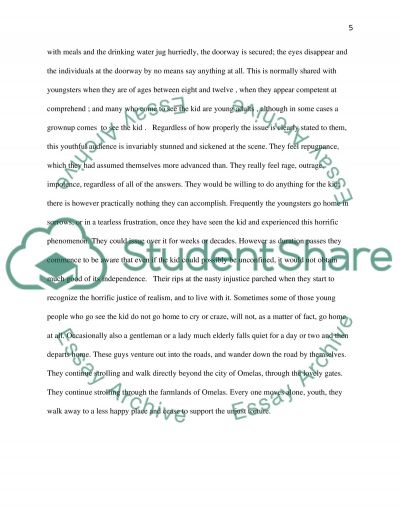

The child symbolizes slavery because it is not free and is a servant to all the citizens of Omelas. There are no slaves in this utopia, as described by the narrator, but in actuality, the child’s freedom is taken from it, similar to slavery.

“They know that they, like the child, are not free,” writes the narrator, showing the reader that although the citizens apparently live “free” in a perfect society, inside their souls, they are not free. The narrator describes the city of Omelas to have no king (president), political system, technology, weapons, or many of the things that currently permeate our …show more content… As human beings, we strive for freedom, and as we see in both our world and the one in the story, no one is truly free. The symbol represented in the story reflects current and past society issues such as military sacrifice, slavery, and injustice. As a reader, one is invited to create and visualize their own utopia, so that one is emerged with the reality of a moral dilemma: the happiness of many for the unhappiness of one. The Iron Curtain of Omelas The short story, “The Ones Who Walk Away from Omelas”, written by Ursula Le Guin, is about a so-called perfect society where the sacrifice of a child is what provides harmony, equality, and prosperity to the citizens of this city.


 0 kommentar(er)
0 kommentar(er)
